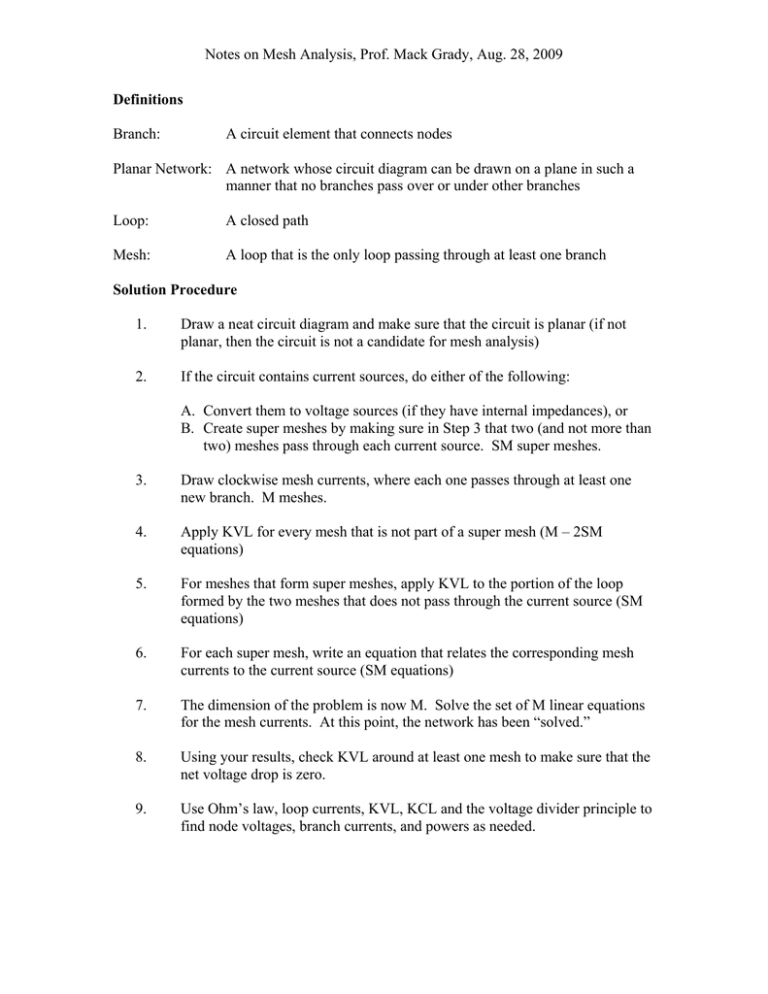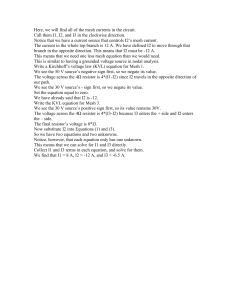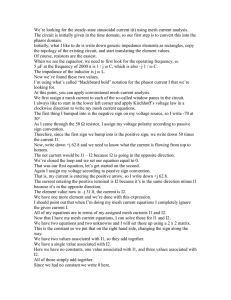Notes on Mesh Analysis, Prof. Mack Grady, Aug. 28, 2009
advertisement

Notes on Mesh Analysis, Prof. Mack Grady, Aug. 28, 2009 Definitions Branch: A circuit element that connects nodes Planar Network: A network whose circuit diagram can be drawn on a plane in such a manner that no branches pass over or under other branches Loop: A closed path Mesh: A loop that is the only loop passing through at least one branch Solution Procedure 1. Draw a neat circuit diagram and make sure that the circuit is planar (if not planar, then the circuit is not a candidate for mesh analysis) 2. If the circuit contains current sources, do either of the following: A. Convert them to voltage sources (if they have internal impedances), or B. Create super meshes by making sure in Step 3 that two (and not more than two) meshes pass through each current source. SM super meshes. 3. Draw clockwise mesh currents, where each one passes through at least one new branch. M meshes. 4. Apply KVL for every mesh that is not part of a super mesh (M – 2SM equations) 5. For meshes that form super meshes, apply KVL to the portion of the loop formed by the two meshes that does not pass through the current source (SM equations) 6. For each super mesh, write an equation that relates the corresponding mesh currents to the current source (SM equations) 7. The dimension of the problem is now M. Solve the set of M linear equations for the mesh currents. At this point, the network has been “solved.” 8. Using your results, check KVL around at least one mesh to make sure that the net voltage drop is zero. 9. Use Ohm’s law, loop currents, KVL, KCL and the voltage divider principle to find node voltages, branch currents, and powers as needed.





